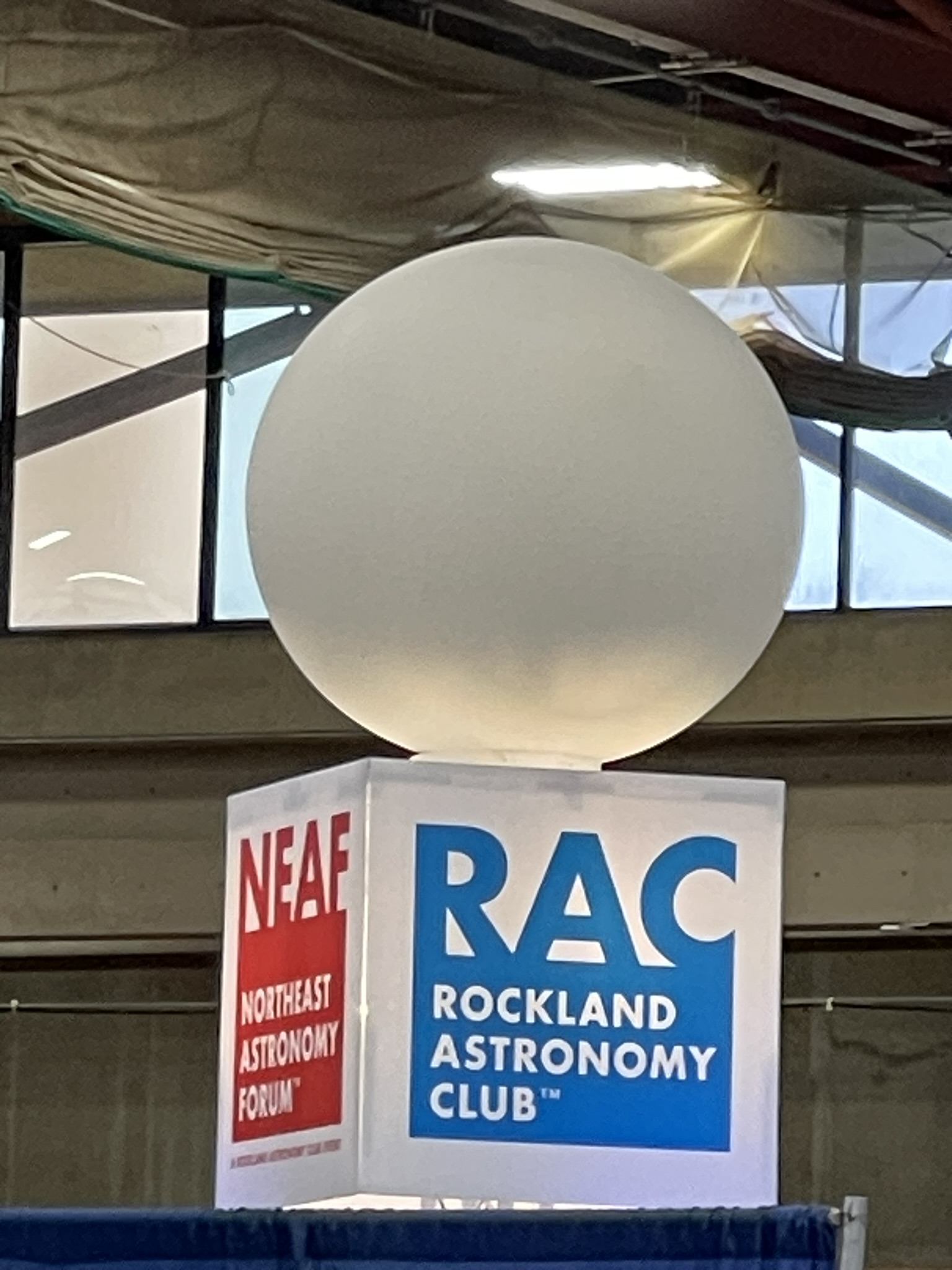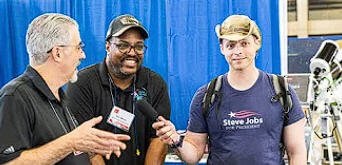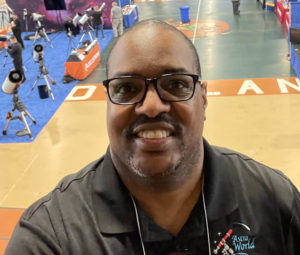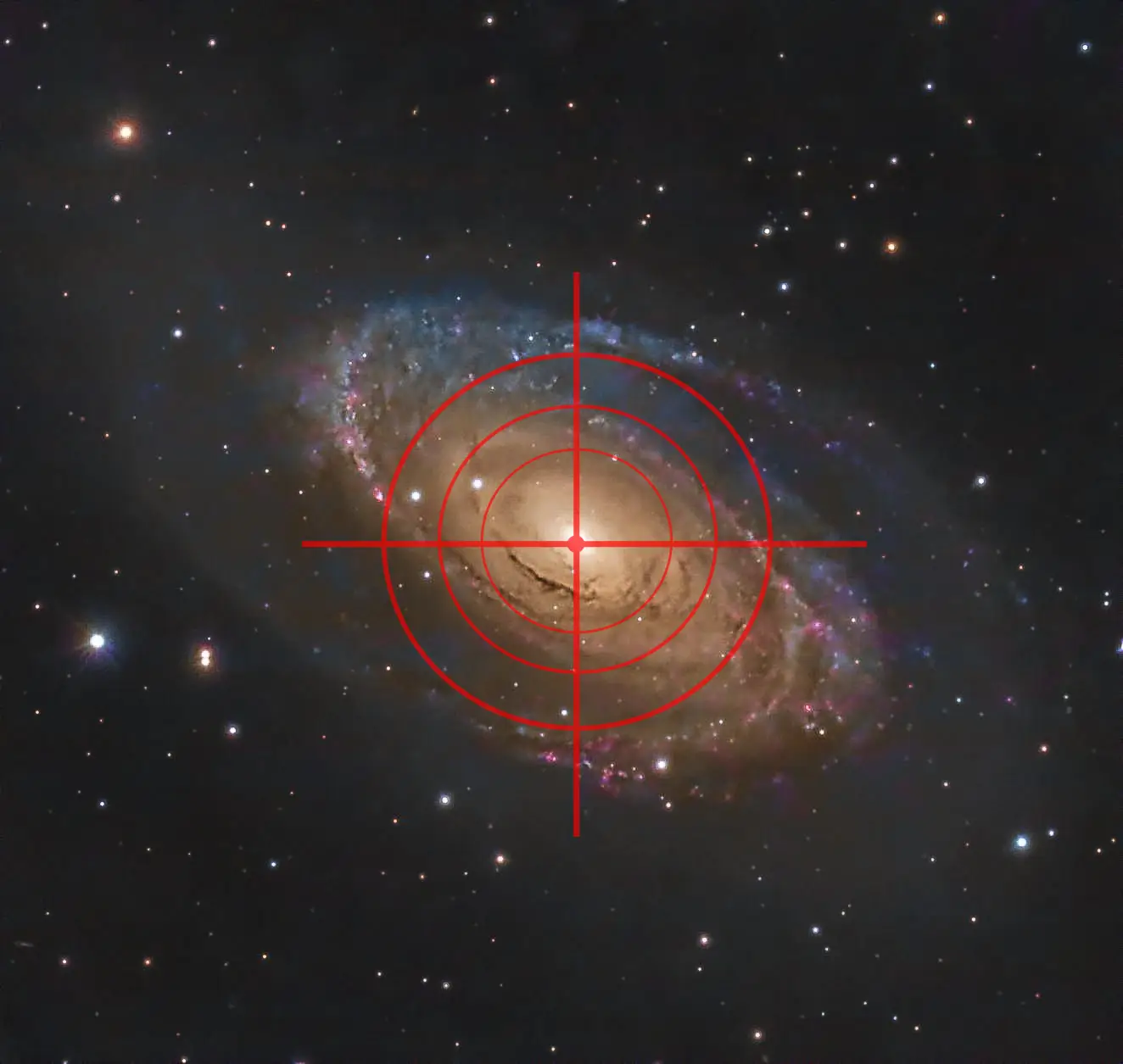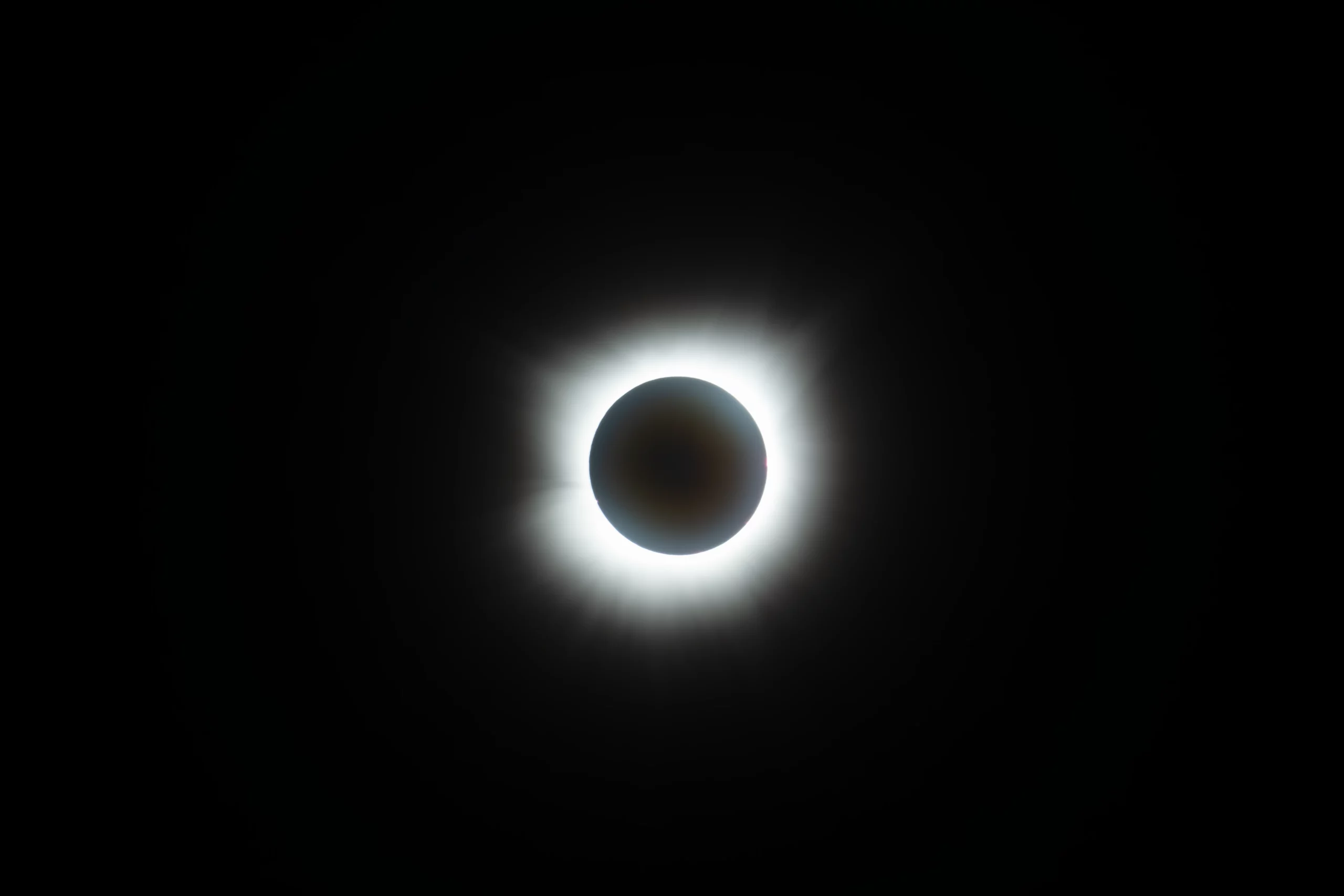Back again in Suffern, New York, USA!
The weekend of April 20-21, 2024, I traveled to Suffern, New York to attend NEAF (Northeast Astronomy Forum). NEAF is the world’s largest astronomy and space expo, where the public gets to see the latest innovations from the top telescope manufacturers and attend workshops and speaking engagements with former and current NASA astronauts and some of the most respected leaders in the astronomy field. There are also hundreds of vendors on hand selling practically anything you need, whether you are a visual astronomer or astrophotographer.
While the attendance was noticeably lower than in the past, it did not disappoint. I can only attribute the lower attendance was due to the solar eclipse event earlier in the month. I heard from others that due to the amount of travel to view the eclipse, most astronomy enthusiasts and vendors just couldn’t attend another event in the same month, which is understandable.
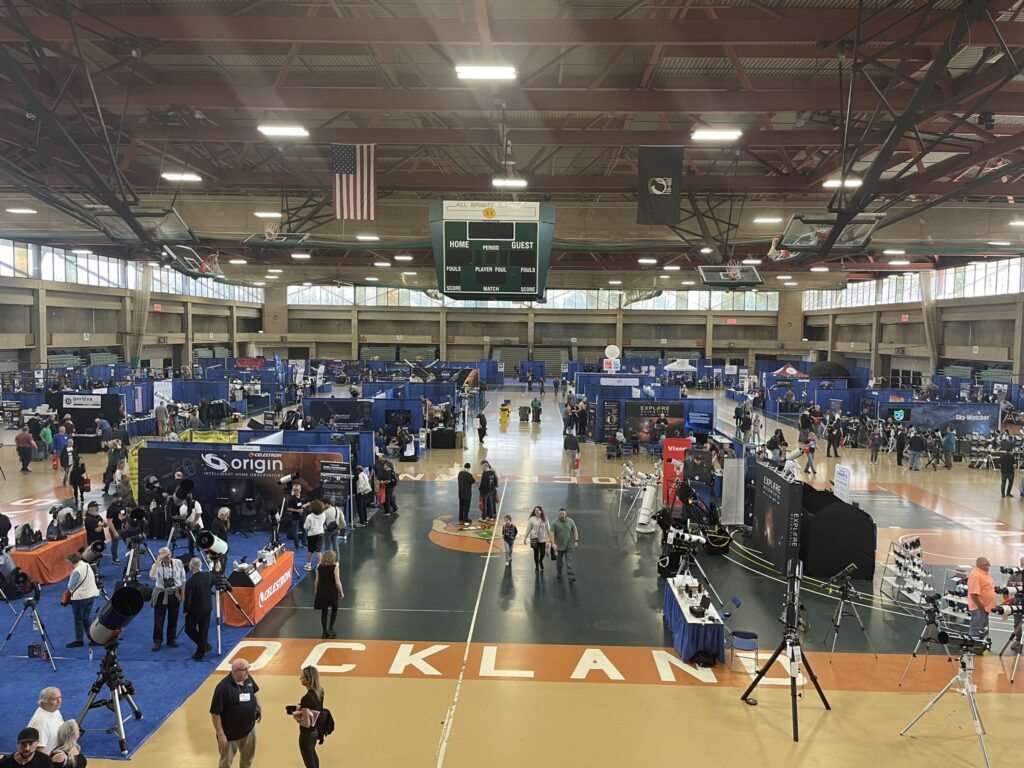
Unlike last year, I did not attend NEAIC (Northeast Astro-Imaging
Conference) which runs on the Thursday and Friday before NEAF. However, I am planning
to attend next year as I would like to sit in on a couple of workshops and
learn from some of the best minds in astrophotography.
For me, attending NEAF is also about the people. I have the chance to reunite with friends I have made during my astrophotography journey, and while working with Dan at the AstroWorld Telescope booth I get to meet and assist new astrophotography enthusiasts. I am proud to celebrate AstroWorld Telescope’s first anniversary when the business was launched. I enjoy answering questions about getting started or sharing ideas to troubleshoot a problem. My favorite thing to do is a YouTube livestream walkthrough of the main floor. Here is where I can showcase the latest products that are on display and talk to representatives of the respective manufacturers like Celestron, ZWO, Pegasus Astro, and Primalucelabs. I plan to do a walkthrough each time I attend.
Click here to link to the my walkthrough and discussions I had during my visit to NEAF this year.
Here are a few faces of those in the astrophotography community may be familiar with that I had an opportunity to meet in person for the first time or reconnect with. I was great to meet with Trevor and Ashley Jones from Astrobackyard. Trevor joined Dan and I for Astropalooza 2023 last December, and it was cool to meet them both in person and have a nice conversation about galaxy season, astrophotography, and some of the cool things we all saw here on the show floor.
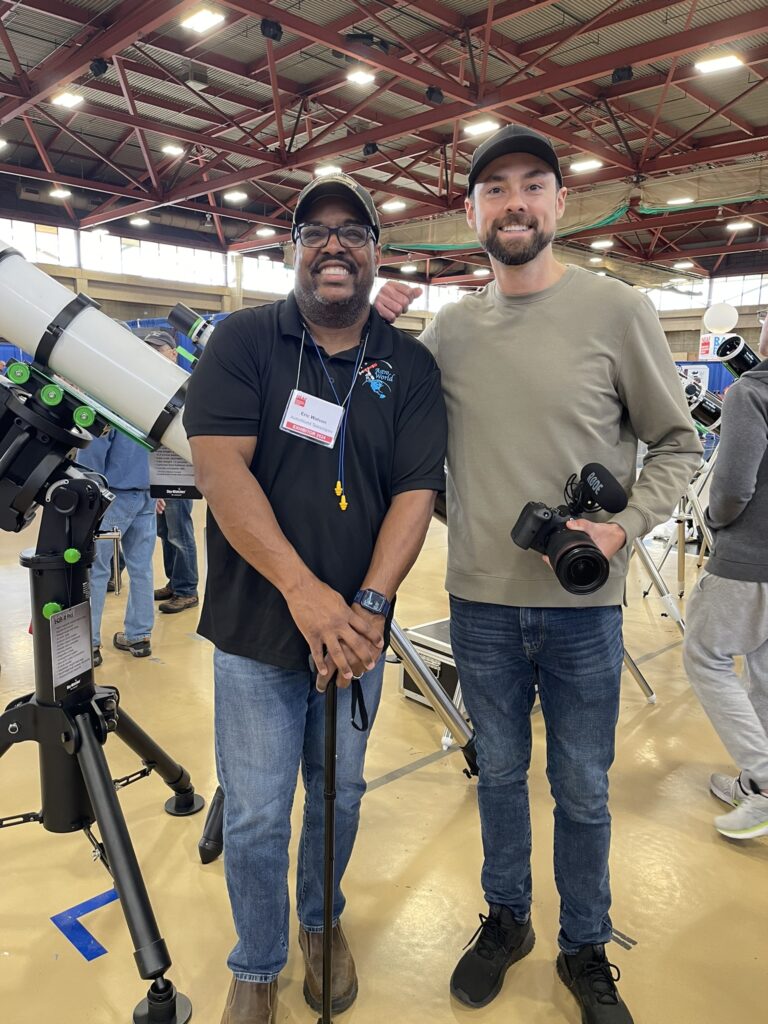

Hanging out with TJ is always great, we first met through Facebook and we both started our astrophotography journeys around the same time. We met each other in person at last year’s NEAF and it’s been great following each other’s progress and this year we I can say we are both Skyshed Pod owners! I’m looking forward to seeing his new Skyshed Pod S when he gets it built.
What can I say about Filippo, he is just an awesome guy and fully of energy! He loves astronomy and it definitely shows through in his passion for his company Primalucelab. They have been a great supporter of Astroworld TV and I just enjoy talking with him, Tom, and the rest of the Primalucelab team when they are here.

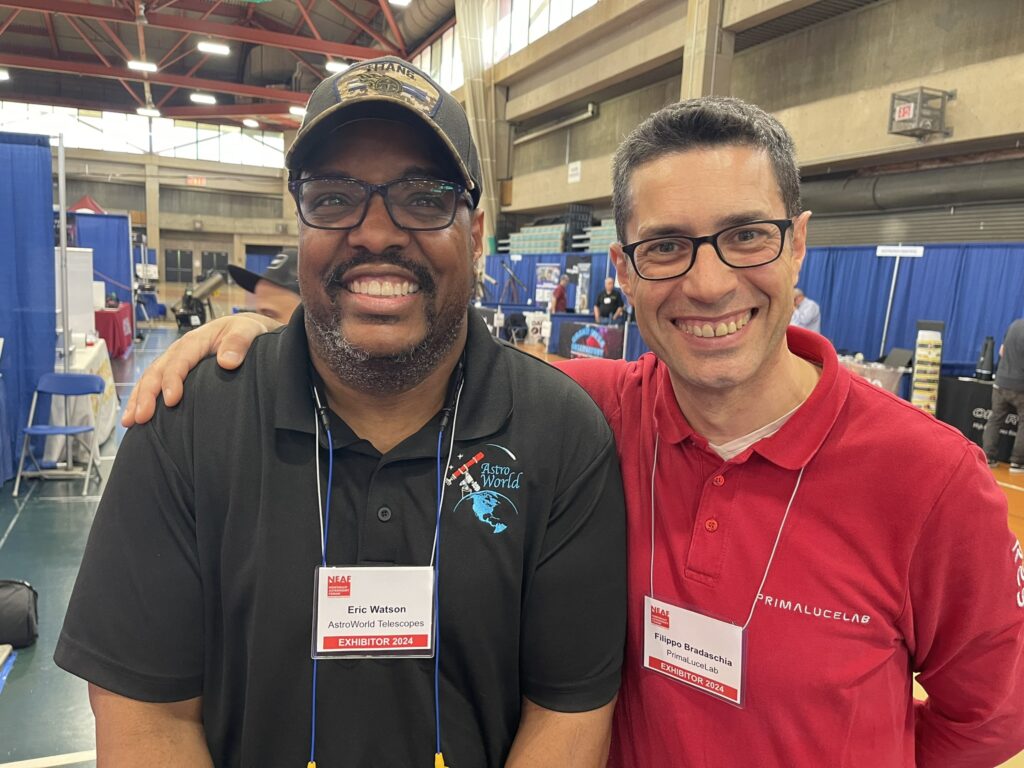
Of course, Astroworld TV or my own YouTube channel could not be where there are today with out the support of our subscribers, and to be able to meet them in person and build genuine friendships is truly amazing and I am fortunate to be a part of this community of such wonderful people.

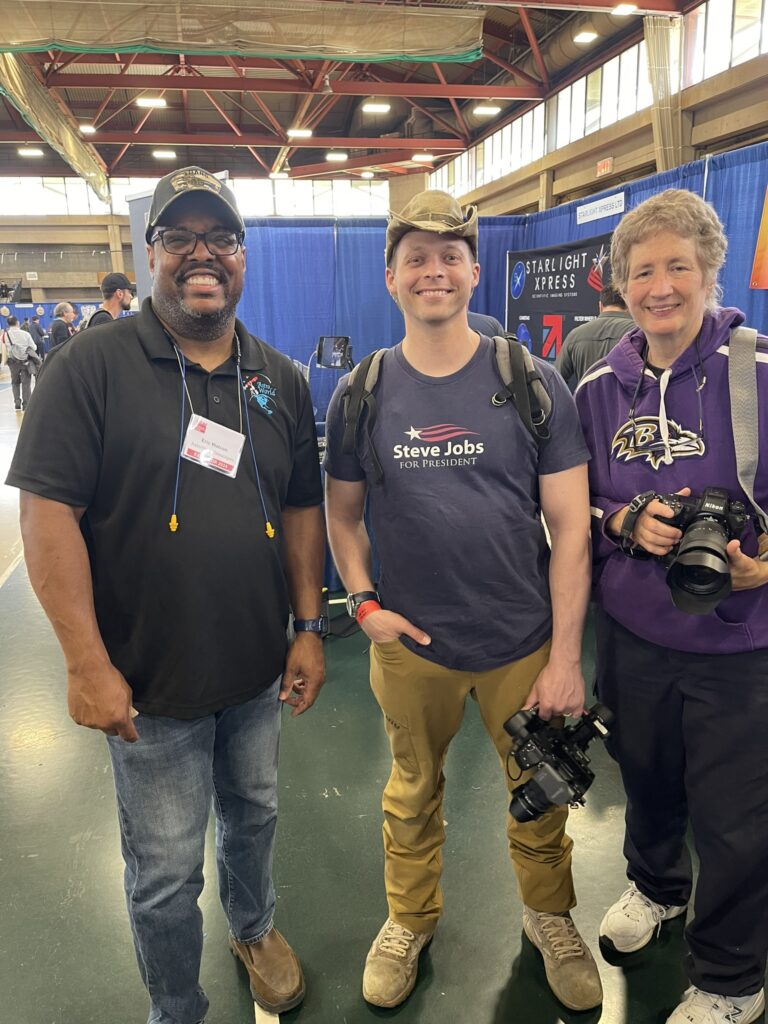
I was even interviewed along with Dan @AstroWorldTV by Ben from the Narrowband Channel discussing Astroworld Telescopes’ first anniversary as an online astronomy retailer.
Here is the link to the interview: https://youtu.be/nxZotqcwHos?si=XWVKnYFzCEBKIK30
Reviews of my top NEAF standouts
Regarding the astronomy equipment, I checked out some great items, some are coming to the market soon, while others I have been keeping a close eye on to possibly add to my collection. Here are items I highlighted during my NEAF 2024 walkthrough.
1. Sky-Watcher’s new Harmonic Drive Mounts (3:48 of my walkthrough)
For the past 5 years, the astronomy community has seen a shift in telescope mounts from the traditional worm gear to strain-wave (SW) or harmonic drive (HD) technology. For those unfamiliar with harmonic drives in telescope mounts these types of drives provide a huge increase in torque and payload capacity compared to the mount head weight, in some cases a 3.5:1 ratio making these mount types great for traveling while still providing excellent tracking and go-to capabilities.
Imagine being able to travel to a dark sky site with your 80mm refractor and astrophotography kit with just a 15 lb. strain-wave mount and tripod kit with no additional counterweights. That is beyond convenience compared to hauling a comparable worm-drive EQ mount setup weighing close to 50 lbs.
Some of the first HD mounts I can recall were quite expensive for most, but more manufacturers have begun releasing their versions driving down costs to more budget-friendly numbers. Now Sky-Watcher has entered the market with their Wave 100i and 150i strain-wave mounts.
The Sky-Watcher Wave 100i is a go-to mount that has a strain-wave mount head weighing 9.5 pounds (4.3kg) and supports a 22-pound (12kg) payload or up to 33 pounds (15kg) with an optional 11lb (5kg) counterweight. It can be used in both AZ and EQ modes for visual or imaging. The larger Wave 150i boasts a 33-pound (15kg) payload capacity and up to 55 lbs. with a counterweight, while still only weighing 12.8lbs (5.8kg). Both mounts can be controlled via Wi-Fi or Bluetooth, and support telescopes using either Vixen or Losmandy dovetails.
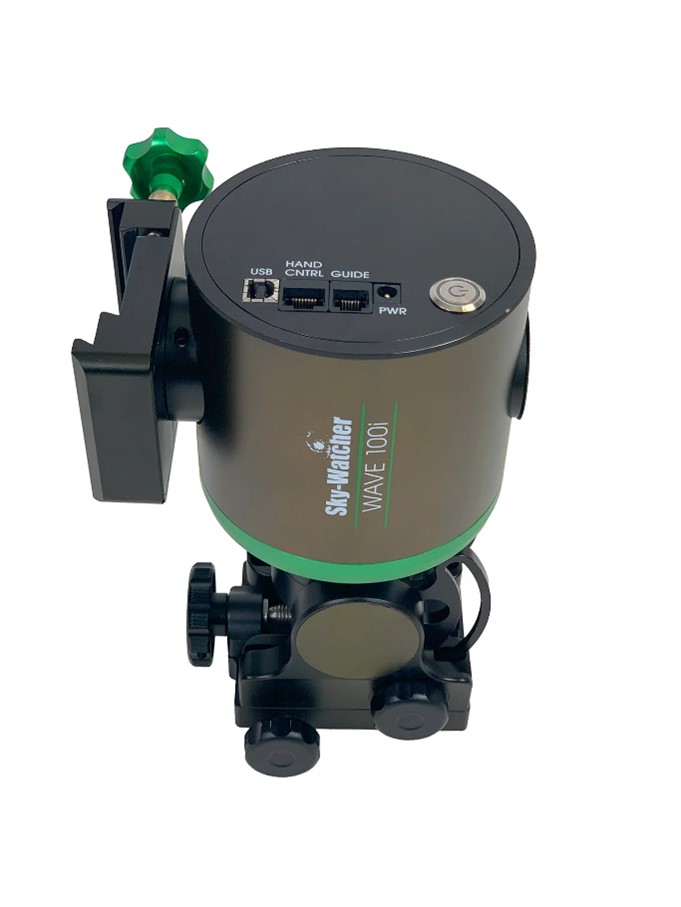

2. ZWO ASI2600 Air (10:56 of my walkthrough)
What do you get when you cross a popular astrophotography camera with an even more popular astrophotography acquisition system?
The ZWO 2600 Air crosses the ASI2600MC Duo color camera, which includes the ASI220 Mini guide camera, and the ASIAir Mini giving you a true all-in-one astrophotography system. For those just getting started in their astrophotography journey, just add your telescope, EQ mount, and maybe a ZWO EAF focuser and you are all set. What could be simpler? From what I have been told, the ZWO ASI2600MC Air will be priced the same as the current ASI2600MC Duo, $1999.
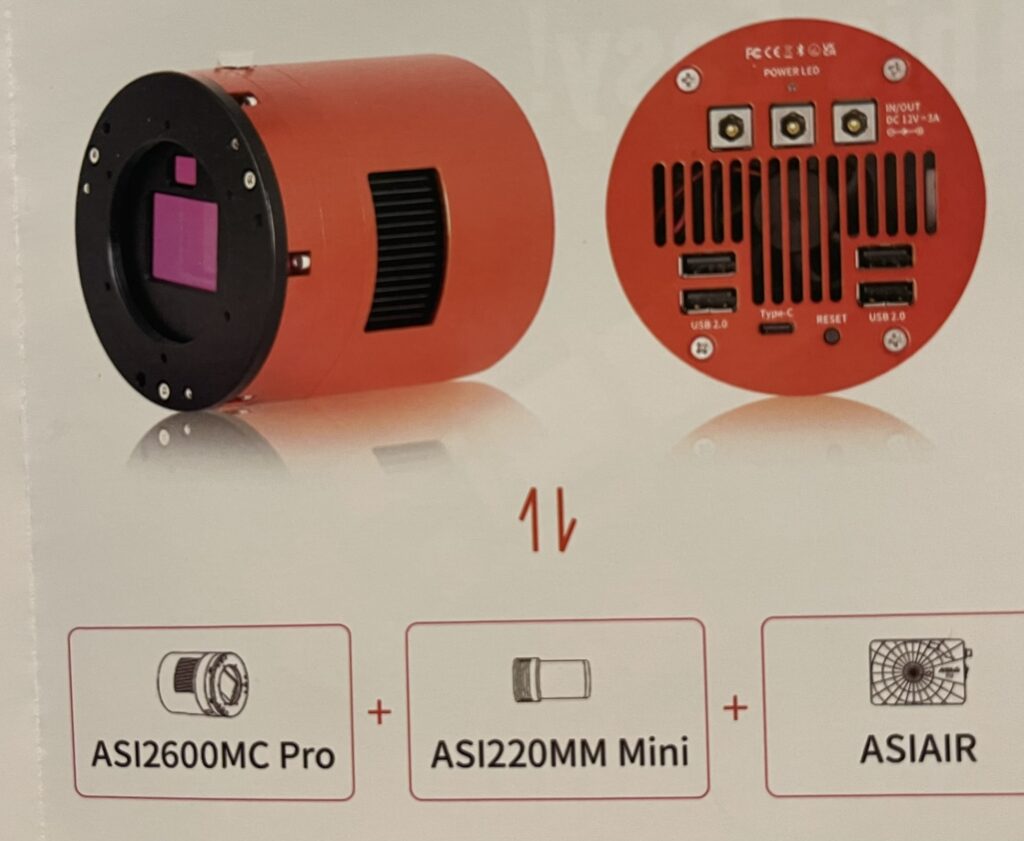
While this is a great way to get novices started in astrophotography, I do have some concerns. From what I have gathered, the camera cannot be used standalone, meaning the ASIAir portion of the device must be running, meaning cannot utilize another acquisition software suite in the future. So, you will need to purchase another primary and guide camera if you decide to move on from this system. Also, there is no ethernet port, like the ASIAir devices, so you must depend on the wireless connection from the camera.
As I mentioned, this system is great for beginners, but you are sort of locked into the ZWO ecosystem, and depending on your point of view this can be a pro or con. I’m just curious about the need for this in the market, especially what this biggest ZWO item, I and many other astrophotographers have been waiting to get our hands on is the CAA, the camera angle adjuster or rotator, that was shown at last year’s NEAF and has been delayed. My latest release information is 4 months. I’ve held a prototype, and I really hope ZWO is listening to their followers and putting more focus into making the CAA a reality and it will be coming to market soon.

3. Pegasus Astro SmartEye Digital Eyepiece (17:00 of my walkthrough)
Outreach is one of the most vital means to educate our society about astronomy regardless of background or age. SmartEye may be one of the coolest, and easiest to use tools to accomplish this mission. SmartEye uses the SkySafari app to direct a user to an astronomy target so it will always know what is being looked at. It will then begin a live stacking process to bring faint objects into a clear image through the eyepiece that can be shared among devices within the audience. This is great for newcomers to astronomy leading to more exploration of the night sky fostering appreciation and curiosity.



I also love the fact that SmartEye can be used with any telescope, and it uses an IMX533 camera sensor, so visual observers and astrophotographers can both utilize this device for their pursuits.
My latest pricing information on SmartEye was in the $1,500 range. Not cheap by any stretch, but if it can deliver what I and many others think it can, I can see this being not only a justification of the price but a game-changing astronomy tool that could bring in a new wave of astronomy enthusiasts.
4. Celestron Origin Intelligent Home Observatory (34:06 of my walkthrough)
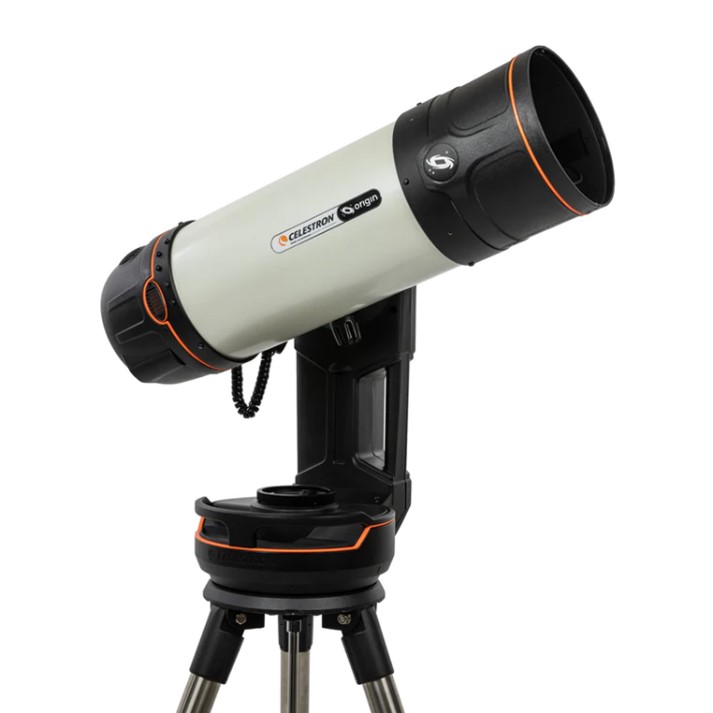
During my YouTube walkthrough, I had the opportunity to speak with Lance, one of Celestron’s product representatives and we discussed their entry into the smart telescope market. The Origin is a 6-inch Rowe-Ackermann astrograph (RASA) with a Sony IMX178 color camera sensor, this means it is only used for astrophotography, and no eyepiece can be connected to the optical tube assembly. RASAs have very fast focal ratios of F/2.2 and this unit has a focal length of 335mm, providing a wide field of view.
The color camera connected to the front of the telescope provides a resolution of 3096 x 2080 and there is a filter drawer that can accept 1.25 or 2-inch filters, so you can use filters such as the IDAS NBZ or Antlia ALP-T for fast narrowband imaging of emission nebulae or HII regions of space.
The Origin is mounted on a Celestron Evolution AZ mount that can be controlled by a smartphone or tablet through the SkyPortal app, which is Celestron’s banded version of the SkySafari planetarium app. Since this is a RASA astrograph taking fast photos and using integrated live stacking software there is no need for long exposures or concern with star trails or auto-guiding.
While Celestron has placed a lot of R&D into the Origin, the $3,999 price tag gives me pause. I can see this as great for outreach as you can share photos over large screens with an audience, and the controls look very simple to use. However, I wonder if this is a bit late reaching the market and if this may have been intended for release during the pandemic but because of that it caused this to be released later than planned. If Origin had been released in 2020 or 2021, not only could I see the justification for the cost, but I think this would have been a home run for Celestron. This is my opinion, and I hope it does well but with other smart telescopes that have already been released, and at lower price points I wonder if the Origin missed its opening into the market. Only time will tell.
During my YouTube walkthrough, I had the opportunity to speak with Lance, one of Celestron’s product representatives and we discussed their entry into the smart telescope market. The Origin is a 6-inch Rowe-Ackermann astrograph (RASA) with a Sony IMX178 color camera sensor, this means it is only used for astrophotography, and no eyepiece can be connected to the optical tube assembly. RASAs have very fast focal ratios of F/2.2 and this unit has a focal length of 335mm, providing a wide field of view.
The color camera connected to the front of the telescope provides a resolution of 3096 x 2080 and there is a filter drawer that can accept 1.25 or 2-inch filters, so you can use filters such as the IDAS NBZ or Antlia ALP-T for fast narrowband imaging of emission nebulae or HII regions of space.
The Origin is mounted on a Celestron Evolution AZ mount that can be controlled by a smartphone or tablet through the SkyPortal app, which is Celestron’s banded version of the SkySafari planetarium app. Since this is a RASA astrograph taking fast photos and using integrated live stacking software there is no need for long exposures or concern with star trails or auto-guiding.
While Celestron has placed a lot of R&D into the Origin, the $3,999 price tag gives me pause. I can see this as great for outreach as you can share photos over large screens with an audience, and the controls look very simple to use. However, I wonder if this is a bit late reaching the market and if this may have been intended for release during the pandemic but because of that it caused this to be released later than planned. If Origin had been released in 2020 or 2021, not only could I see the justification for the cost, but I think this would have been a home run for Celestron. This is my opinion, and I hope it does well but with other smart telescopes that have already been released, and at lower price points I wonder if the Origin missed its opening into the market. Only time will tell.
5. Primalucelab Ghost Mode (46:25 of my walkthrough)
Wrapping up my walkthrough I headed over to Primalucelab for a shot of Italian Espresso and to chat with the team about the ghost trap I saw under one of their Avalon M-Uno mounts.
Primalucelab is now adding a new feature to their astrophotography software, PLAY, that will be used with their Eagle control units (Eagle Manager X v2 minimum required). For PLL devices (Essato and Sesto focusers, Alto camera rotators, and Giotto and Arco flat panels and motors), Ghost mode will take advantage of the device’s WiFi to create a virtual COM device, eliminating the need for USB cables. This will still allow use of astrophotography programs that use the ASCOM platform as we currently do.
For more details on GHOST mode and how to replace USB cables with wireless connection, click this link.
Cable management and minimizing cable drag is a concern for astrophotographers and I can certainly see how GHOST mode will help. Just know that you must have an EAGLE with at least Windows 10 1809 installed to work.
Final Thoughts
When I first started astrophotography in earnest a few years ago and learned about NEAF, I was so enthusiastic about the idea of going. I wanted to see what it was all about and when anyone says it’s the world’s largest, it really peaks your interest. Then the pandemic put a hold on NEAF, but when it returned last year I was determined to attend NEIAC and NEAF and it was fantastic. Now after attending my second, I want to attend it every year for as long as possible. The people are what make this possible and I would like to thank the Rockland Astronomy Club for continuing to host this event, the astronomy manufacturers for bringing their latest products and innovations, and the vendors for being here and taking my money, LOL. But of course thank you to all the people that have stopped me to say hello and the conversations we have, and for all the fun everyone brings when attending. I hope to see you all again next year.
Did you attend NEAF 2024? Didn’t but hoping to attend in the future? Enjoyed the YouTube walkthrough? Leave a comment!

